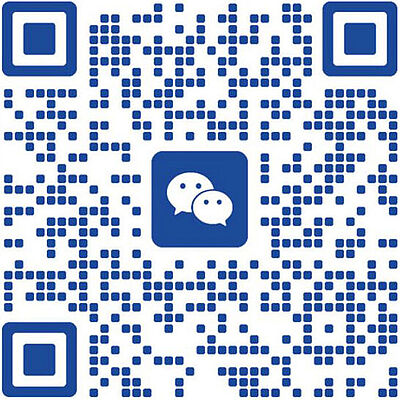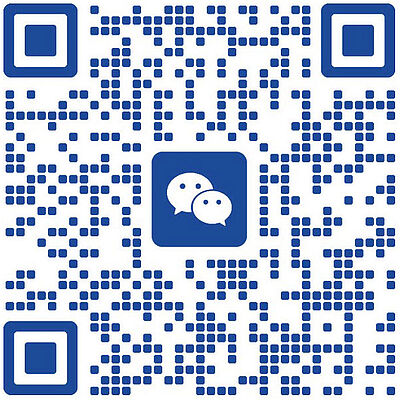
Leadership in the Digital Age
Why the Understanding of Leadership Must Change
Direct, personal contact declines when teams work remotely. This can result in workers losing their sense of belonging to their team and company. Organizations and their managerial staff must respond with appropriate actions and strengthen cohesion and identification with company values.
The changed working conditions in the age of digital transformation demand a new management style at all levels of the hierarchy – a “New Leadership”. The task that managers have, is to revisit and adapt their actions and management instruments. In a hybrid world of work, employees expect their superiors to be transparent and trusting, and be able to communicate and define clear goals. Those who have leadership duties must, therefore, be able to identify what motivates their employees, even if they are not physically close and the dialog is mostly exchanged digitally. This is how leaders develop into mentors.
What Qualifications and Competencies Are Essential for New Leadership?
The first thing leaders should have in the digitalized working world is the ability and willingness to adapt. Digital tools and agile working methods accelerate change, which is why they require a high degree of adaptability and digital competence. Furthermore, managers act as a role model for employees now more than ever. As coaches, they bring their ability to lead and motivate themselves independently into their team and help their team members see objectives that are aligned with those team members’ individual competencies. This mentor–mentee relationship thrives on bold, committed leaders who support workers and guide them on the different paths that each one takes. The topic of communication will continue to grow in importance in a leader’s arsenal and will represent an even greater proportion of working hours so that digital leadership is successfully achieved in distributed teams.
For this reason, companies must above all, empower their managers with soft skills – primarily social and communicative competencies – so that they can meet the demands of New Work and New Leadership. Digital technologies will not be a substitute for managerial staff at any time in the foreseeable future. However, they help give targeted support to managers for their duties. Consequently, they can perform their changed management tasks more efficiently and effectively. Pioneering leadership and corporate culture as well as an innovative, agile organization are needed to make the current transformation in the working world successful.
Top-Down Transformation Does Not Create Success
We separate the current challenges for people with leadership responsibility into two categories: Firstly, strategic factors such as coaching and communicating purpose are increasing. Secondly, operational matters such as communication and self-organization are also becoming priorities. There are also further challenges for upper management with consequences to match. The possibility and success of transforming determine the company’s future.
Change processes are characterized by a high level of risk, a strategic realignment, and strong leadership by upper management.
A company can only remain successful in the future when its employees accept and support the realignment. In this context, there are immense structural issues that can arise, especially at organizations that have a long history. This is because homogeneous workforce structures have usually developed over the years and are adapted to the existing corporate culture as optimally as possible.
A change in the strategic direction usually has consequences for the corporate culture too. The priority here is to reconcile the workers’ personality profiles with the new culture. Strong transformation/change management is needed to communicate newly developed cultural elements to colleagues and coworkers. This is the only way to realize strategic objectives successfully.
When companies fail at transformation, it is often because of management-related issues such as the wrong mindset, purely top-down approaches, insufficient project management, or a lack of communication.
What Strategic Management Actions Are Needed?
Strategic management is especially characterized by coaching approaches and the ability to communicate purpose. The potential challenges during transformation in this area are:
- The corporate culture should be tangible and shaped by the employees to communicate a clear “vision of actions”.
- Finding an answer that is logical or direct for all employees to the question: “Why are we doing this?”
- Transforming manager duties: moving away from issuing instructions and checking results, and toward a mentor role guiding employees personally.
- New concepts, routines, and training must be developed and communicated.
- The concerns of all employees must be equally respected.
What Operational Management Actions Are Needed?
When it comes to management at an operational level, solutions must be found including:
- Maintaining personal proximity and communication from a physical distance.
- Preserving and strengthening collegial leadership and collaboration in distributed teams.
- Creating options for responding to workplace injuries in home offices.
- Providing information about rights and obligations from home-office audits.
- Anchoring agile working methods to projects as well as team thinking.
- Safeguarding data protection and security when working from home and remotely (on the part of the company as well as employees).
What Operational Management Actions Are Needed?
The transformation of a management culture runs throughout the organization and poses challenges for people with leadership duties at all levels of the hierarchy. The key element to overcome them and respond to new situations and quickly respond to new situations is an agile strategy for processes, objectives, and thinking. It needs new rules, routines, concepts, and training.
Management Concepts Revisited
It is clear that the leadership level must change in order to successfully overcome the above challenges. The new management concept must be designed to be transparent with clear targets, supported by straightforward rules.
Presence is no longer a decisive factor for performance in an age of digitalization, distributed teams, and flexible working hours. Instead, the aspect of effective work has to be made measurable. Also, priority must be on the quality of work while simultaneously reducing waste.
Another important aspect of the new management concept is adapting the ways availability and capacity are organized. When team members work from different locations, managers cannot identify availability and workload with the tools they used previously. Using new media and digital tools creates transparency in this respect. Simultaneously, team members can manage and adjust their personal availability and capacity as a result.
To optimize the management concept, it helps when managers test the new adaptations themselves in pilot mode so that they can obtain important findings for the implementation.
One Team – One Spirit
To strengthen the team atmosphere and employee satisfaction, it is important to address individual team member needs. The concerns of each individual should always be in line with the company and project goals. In this context, it is important that managers identify what motivates their employees. Managers should see themselves more as a coach and mentor who acts as a peer, rather than following a classic top-down management style. This boosts the interpersonal aspect of teamwork and consequently the team spirit.
Distributed work has also made flexible working hours more important. The actual hours that team members work are changing, especially when they work from home. Enabling flexible working hours has a positive effect for companies and their managers in this digitalized working world. Flexible working hours need clear rules that are developed jointly within the team and adapted to individual needs.

How Can We Support You with “Leadership in the Digital Age”?
To prepare you for the challenges associated with the new type of leadership, Ingenics offers different solutions in three categories: technical and organizational conditions, management concept and management culture, and strengthening team spirit.
Here are some examples of how we can support you as a partner:
- We analyze the status quo with you to find out where the technical conditions for remote working can be optimized and how that optimization needs to occur. In parallel, we develop new working-hour models that are adapted to your company’s and employees’ requirements and help you implement them. Templates for recurring tasks are indispensable for keeping collaboration efficient, especially in distributed teams. With our extensive project experience, we have the right documents for this task.
- We create your individual leadership map in line with the concept of results-based management. Using it, you can reflect on your understanding of leadership, your leadership actions, and goals and adjust them accordingly. Answering questions such as “What do I stand for?”, “What is important to me?”, and “How can I communicate this to my team?” is an important step on the journey to New Leadership. That is why we support you with workshops, seminars, and our specialist knowledge for manager development and accompanying change management within companies.
- We know that changes can only have lasting success when they are accepted by the entire staff. Each person is critical for their own success , which means that managers have a special responsibility during transformation processes. Organizational changes require managers and employees to adapt and expand their personal competencies frequently. To achieve this, we offer training and workshops tailored to your needs, and we develop and hold them jointly with you.
All Academy Training on “Leadership and Management” at a Glance
- Create metrics for your changes. Any transformation initiative within the company will fizzle out if it does not contribute toward a specific target and its effectiveness cannot be verified. Key performance indicators (KPIs) help you achieve your targets and measure their success, and KPIs must be selected and implemented in accordance with the relevant requirements. You can also gain an idea of the situation, evelopment of leadership and teamwork within the company by using surveys of employee satisfaction, such as “Great Place to Work” for example. We define the KPIs that are relevant for you together e.g., in relation to workplace culture, leadership, innovativeness, or adaptability, define how the results can be measured and what you can derive from them.
We Created a collection of actual KPIs for measuring success in digital leadership in our white paper.




